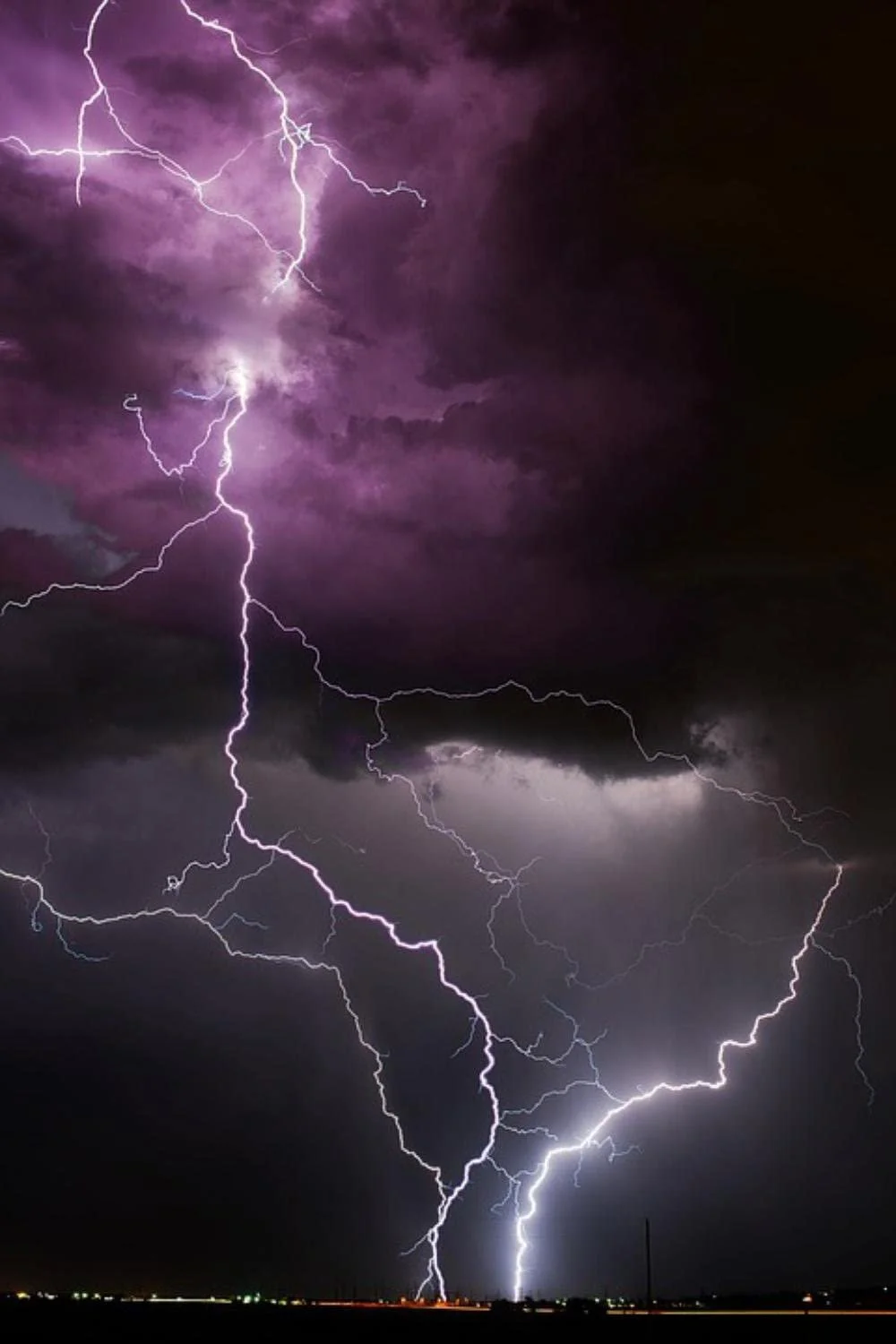Tonight the sky is growling. Beneath the blackened heavens a finicky breeze rattles the maple leaves and makes the pine boughs groan. A scent of rain rides the whiffs.
Without warning this darkness is penetrated by fingers of ghostly white. They grasp at the earth, its treetops and its mountainsides, ever so lightly before withdrawing into the night. Moments later, thunder rumbles.
Lightning is one of the most dramatic, uncontrollable and dangerous acts of God. A hundred times each second bolts of lightning connect with the Earth. Where they will strike, no one can say. But aside from floods, no other natural phenomenon claims as many lives or causes as much damage.
Each year about this time we hear the stories of people killed, survivors wounded and fires started by lightning. Like the teenage boy I read about who was struck while watching a baseball game. The lightning shredded his clothing, ruptured his eardrums and burned his skin, but he survived.
A man playing cricket in Kansas City, Missouri, the same week was not so lucky. The 33-year-old victim was standing in an open area far from any trees when the bolt struck him down. At 6 feet 3 inches, he was the tallest person on the field at the time.
Gretel Ehrlich, a Wyoming rancher and author, survived a lightning strike near her ranch one summer while walking on a treeless mountain slope in a rainstorm. "There was a white flash," she writes in 'The Solace of Open Spaces,' "It felt as though sequins had been poured down my legs, then an electrical charge thumped me at the base of my skull as if I'd been mugged." For months afterwards her blood pressure fluctuated erratically and her physical strength was drained.
Like crazed gunmen, electrical storms roam the heavens each summer and fire down on trees and homes and animals and people with abandon. The ground beneath thunderclouds is often positively charged while the bottoms of the clouds are negative. The opposite charges attract each other in much the same way they do in magnets and only the air between them holds them apart. The closer they are together, as on a mountaintop or the roof of a barn, the more likely the charges are to jump the gap and join in a spark of lightning.
But why lightning strikes some places and not others is still a mystery. Men are about four times more likely than women to be struck, possibly because they spend more time outdoors, and high places like the Empire State Building attract more bolts (23 per year in its case). But the highest point doesn't always get the charge and the old adage that "lightning never strikes twice in the same spot" is not true.
Poor Roy Sullivan, a retired forest ranger in Virginia, was struck by lightning seven times across nearly 40 years before committing suicide in 1983. "Lightning has a way of finding me," he once explained. "When a storm blows up I put my wife and kids in the living room and go off by myself and sit in the kitchen, scared."
Lightning is something we learn to live with, those of us who work and play out in the open. We learn to avoid peaks, ridges, water, and tall, isolated objects during a thunderstorm. No place is invulnerable to lightning, but taking refuge in large buildings or enclosed vehicles with rubber tires are the best bet. Metal farm equipment or outbuildings are particularly dangerous and talking on the phone is ill-advised. At least one U.S. lightning death a year is attributed to electrocutions across telephone lines.
Out in the open during a summer squall last summer and far from any shelter, I remember running for cover in a thick grove of small aspen. As I huddled next to the trees, taking what cover I could beneath their wet leaves, lightning struck repeatedly along the river just a few hundred yards away. Hail pelted the ground and gathered in icy clumps. Rain fell in thick sheets.
The hair on my arms and the back of my neck began to raise on end. Was it the sudden chill of cold air rushing down with the rain, or was I becoming a target for lightning? I crouched ever lower, tossing aside keys and belt buckle and everything metallic, and praying for a break in the storm. Craa-aack! Boom!
And then it was over, moving on to other fields. I scrambled from my hideout and moved quickly toward my truck, ever so relieved and respectful.


